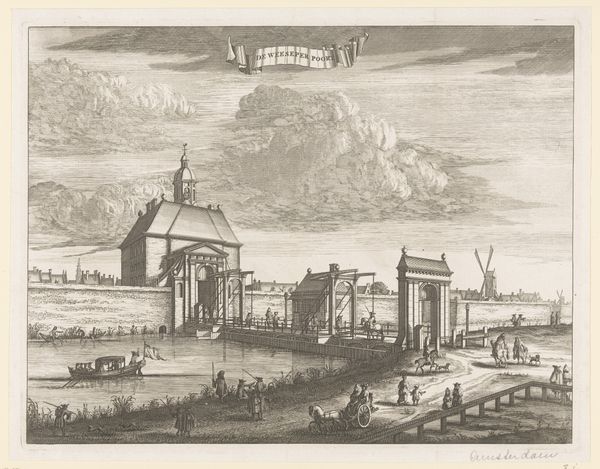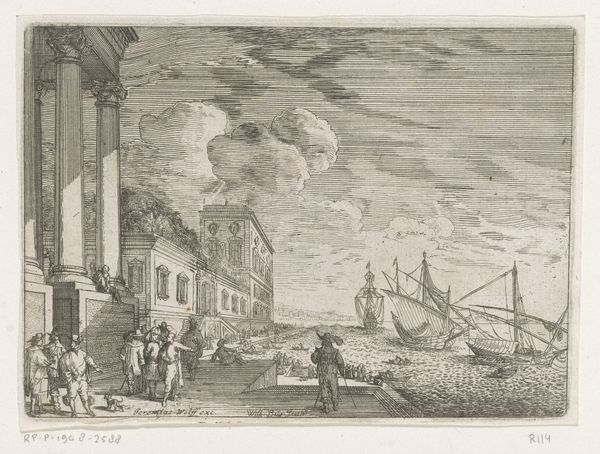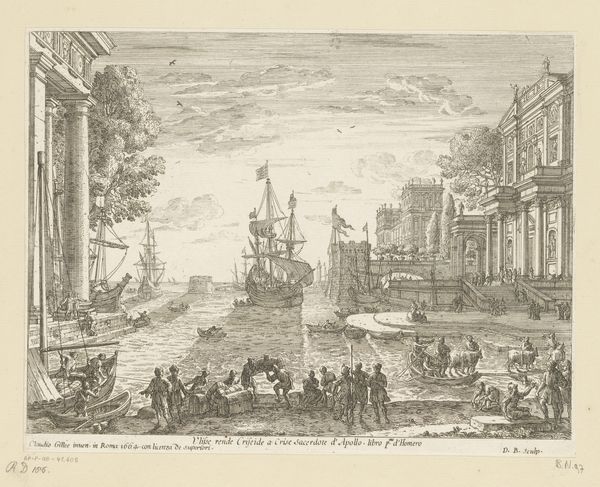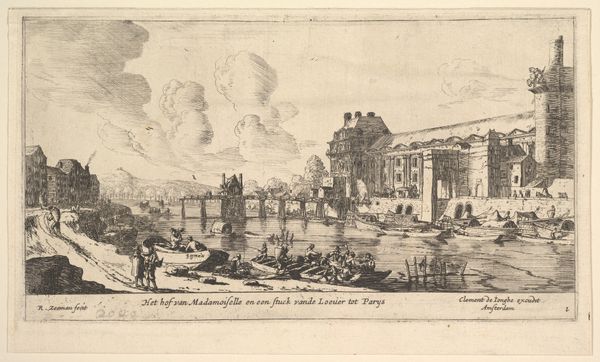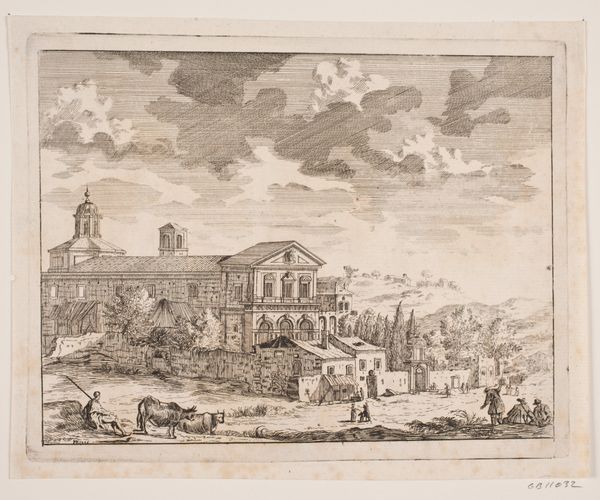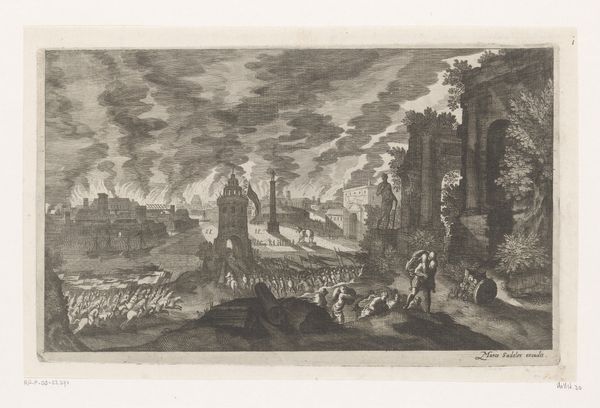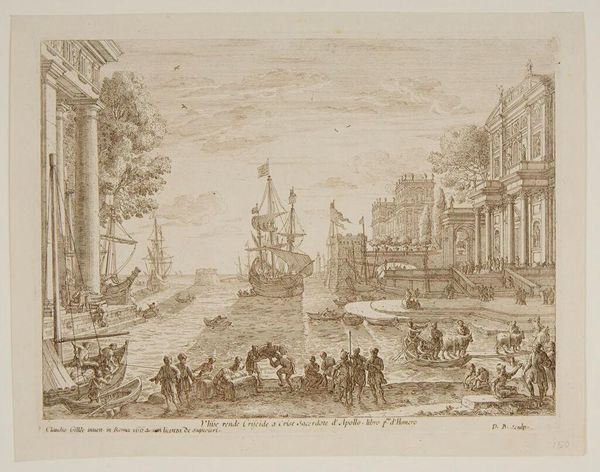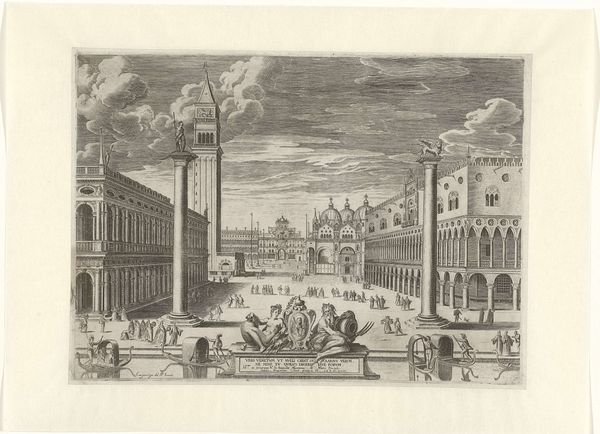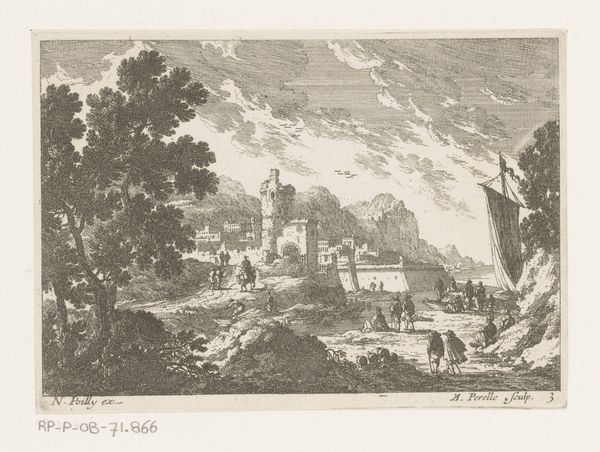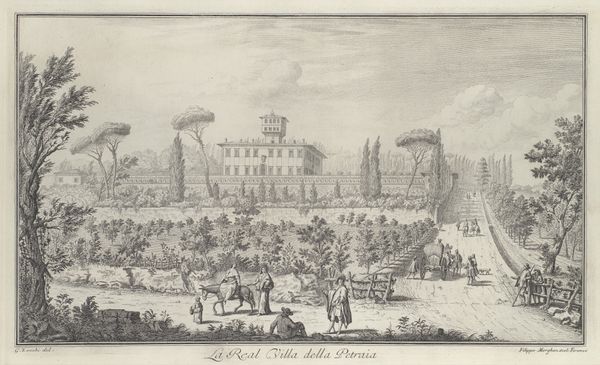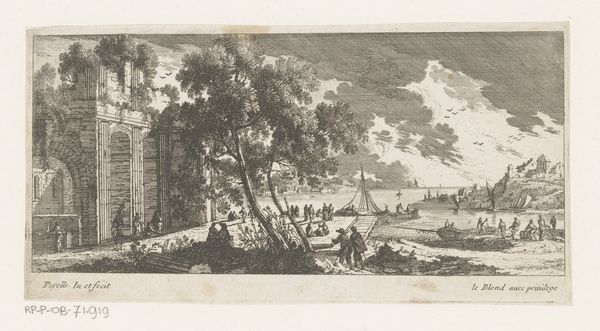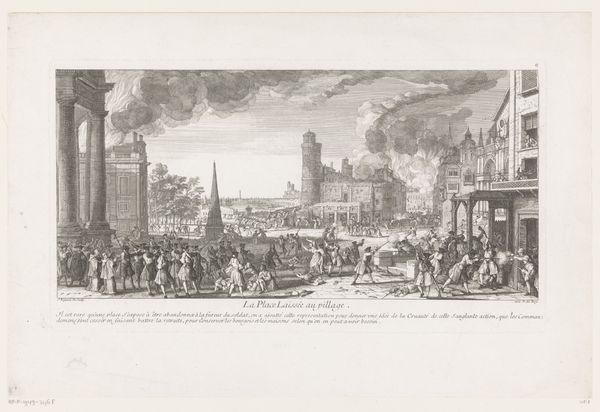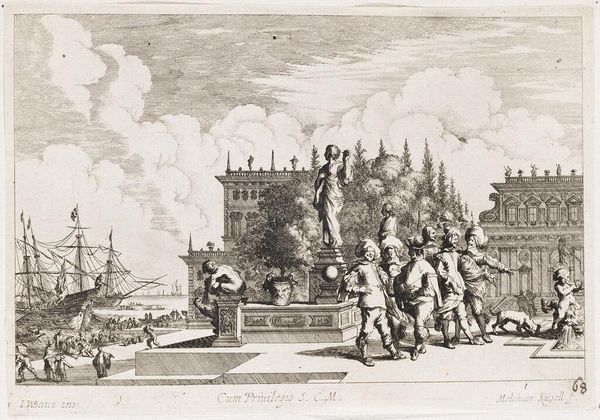
Havengezicht met op de voorgrond mannen op een bordes 1640 - 1724
0:00
0:00
print, etching
#
baroque
# print
#
etching
#
landscape
#
etching
#
figuration
#
cityscape
Dimensions: height 107 mm, width 147 mm
Copyright: Rijks Museum: Open Domain
Curator: This etching, entitled "Havengezicht met op de voorgrond mannen op een bordes," or "Harbour view with men on a platform in the foreground," comes to us from the workshop of Johann Wilhelm Baur. Dating from between 1640 and 1724, this piece provides a glimpse into the bustling life of a Baroque-era port city. Editor: My first thought is how delicate yet imposing it feels. The intricate line work gives it this ethereal quality, while the composition itself, the large building, and even the stormy clouds suggest grandeur. Curator: Yes, the etching process itself allows for such fine detail. Baur, or perhaps someone within his studio, would have used a needle to draw into a wax-covered metal plate, which was then submerged in acid. The acid bites into the exposed lines, creating grooves that hold the ink. It’s a painstaking process, requiring incredible skill and labor to achieve this level of detail and atmosphere. Note how that labor translates into the implied status and wealth on display. Editor: Absolutely, you see those figures on the staircase leading up to the estate, but even without the grandeur of the Baroque building, it’s the figures who really anchor the narrative of status for me. Even though they are simply lines here, you can see the confidence of class that Baroque artists loved to invoke through the figures’ clothing, and body language. Curator: Note too how the harbor isn't merely a backdrop, but part of a wider commercial enterprise. The ships suggest trade, and power is materialized through shipping lanes and exchanges of goods from overseas. Consider who these figures are and how their status is intimately linked to trade in raw material or luxury commodities coming through this harbor. Editor: That relationship between wealth and trade extends, I think, to the statues positioned strategically. Placed at key architectural points to create sight lines through which merchants and landowners align their identities with allegorical and mythic narratives. Even those churning clouds serve to amplify the overwhelming experience of wealth and privilege in this port. Curator: Indeed. What begins as a seascape reveals itself as a snapshot of production and display of societal power dynamics that remain so closely connected to artistic and manual labor even to this day. Editor: Precisely. It encourages one to question not just what we are seeing, but whose stories we are privileging through repeated representation, a question as relevant today as it was centuries ago.
Comments
No comments
Be the first to comment and join the conversation on the ultimate creative platform.
